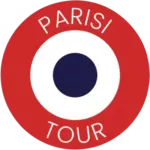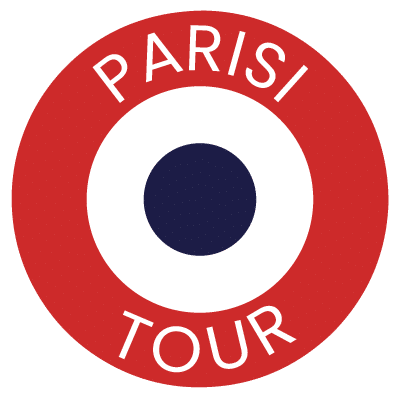Discover the secret passages of Paris.
The covered passageways of Paris are part of the curiosities that contribute to the authenticity and beauty of the city. Built for the most part in the 19th century, they are now mainly home to boutiques and cafés, restaurants, small bars, and coffee shops.
More than simple shortcuts to cut across the main avenues, these galleries can be the object of genuine wonder. We have counted about twenty of them, and each one, unique in its kind, has its share of surprises and discoveries.
To help you find your way around, the Parisi Tour team has selected the 7 covered passageways of the capital not to be missed. We invite you to explore them to immerse yourself in a modern and old-fashioned Paris that will not leave you indifferent.
1. The Panoramas passageway.
Take a leap in time by visiting the Passage des Panoramas. The second passageway, to have been built in 1799, has kept its charm and its period decoration. It is very well known by Parisians, even more so by philatelists of the city and the country because of its numerous stores selling stamps and old postcards.
Accessible at 11 boulevard Montmartre / 151 rue Montmartre / 38 rue Vivienne / 10 rue Saint-Marc - 2e arrondissement.
2. The Vivienne gallery.
Perhaps the most famous covered passageway of the capital for its breathtaking beauty. Everything is elegance, splendor, and luxury: from its imposing dome to its magnificent glass roof, passing by its mosaic floor or the high-end ready-to-wear boutiques that have settled there. If you pass by the Palais-Royal, don't hesitate to go and visit this emblematic gallery, whose neo-classical Pompeian style opened in 1823. We promise you will leave with stars in your eyes!
Accessible at 4 rue des Petits-Champs / 6 rue Vivienne / 5 rue de la banque - 2e arrondissement.
3. The Colbert Gallery.
We stay in the 2e district with the covered gallery Colbert, only a few minutes from the Vivienne gallery. Just as beautiful and lush, this gallery has nothing to envy its neighbor. Purchased by the Bibliothèque Nationale de France, the Colbert gallery is not home to a store or restaurant but to many research institutes and schools related to art history. However, it is well worth a detour, if only to admire its rotunda and its glass dome, with in its center the statue of Eurycide (nymph in Greek mythology, wife of Orpheus) dying.
Accessible from 6 rue des Petits-Champs / 2 rue Vivienne - 2nd arrondissement.
4. The Princes' passageway.
Illuminated by dozens of indoor lampposts, the Passage des Princes is now home to boutiques devoted exclusively to the world of children's toys. Needless to say, crowds flock here around Christmas! For the record, the Passage des Princes was demolished in 1985 following a property development, but rebuilt identically ten years later, much to the delight of young and old alike.
Accessible at 5 boulevard des Italiens / 97-99 rue de Richelieu - 2e arrondissement.
5. The Cairo passageway.
It's impossible to talk about the covered passageway of Paris without mentioning the Passage du Caire! Not only is it the longest (it extends over 360 meters), but it is also the oldest passageway built in the city. Its creation dates back to 1798, one year before the Panorama passageway.
It is located on the Sentier side and is mainly home to wholesale and fabric stores. This passageway is undoubtedly not the most beautiful or best maintained, but it is still worth visiting.
Accessible at 33 rue d'Alexandrie / 2 place du Caire / 237 - 239 rue Saint-Denis / 14 - 34 and 33 rue du Caire - 2e arrondissement.
6. The Grand-Cerf passageway
Built in 1825, it was not until 1845 that the big glass roof that adorns the ceiling of the Grand-Cerf passageway appeared. In addition to having been one of the shooting locations for Louis Malle's film "Zazie dans le métro" this gallery is also a concentration of small boutiques of original designers and craftsmen, above all, a concentration of small boutiques of original designers and crafts that mix culture, decoration, ready-to-wear, and many other surprises.
Accessible at 145 rue Saint-Denis / 10 rue Dussoubs - 2e arrondissement.
7. Brady Passageway.
Last stop on our selection, and not the least! Here we leave the centre of Paris for the 10th arrondissement, and embark on a direct journey to India! This surprising passageway is the only one in the capital to be divided in two by the Boulevard de Strasbourg, with a covered section and a second section under the open sky. Nicknamed Little India by Parisians, this passageway is home to some of the city's best Indian restaurants, as well as a host of Indo-Pakistani, Mauritian and Reunionese shops.
So, like us, you have a passion for cheese naans, or if you're in the mood for an exotic and spicy getaway, you now know where to go!
Accessible at 43 or 46 rue du Faubourg-Saint-Martin / 22 or 33 boulevard de Strasbourg - 10 e arrondissement.
Also in this category

